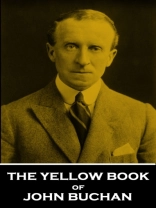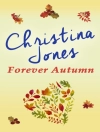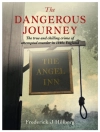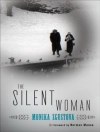Buchan studied at Hutchesons’ Grammar School, Glasgow and at seventeen won a scholarship to the University of Glasgow to study classics. There he began to write poetry. In 1895 he transferred to Oxford to continue his study of Classics and in 1896 ‘Sir Quixote of the Moors’ was published followed by the non-fiction ‘Scholar-Gipsies’. His prolific literary output now hardly faltered.He graduated in 1900 and became the private secretary to Alfred Milner, the High Commissioner for Southern Africa and other colonies. Buchan found the same inspiration in the African landscape as he had in the Scottish Borders, and would later set many works here. Returning to London he became a partner in a publishing house, and garnered an editorial role at The Spectator. He also completed his law studies. He was called to the bar in 1901 but never practiced. On 15th July 1907 Buchan married Susan Charlotte Grosvenor, the cousin of the Duke of Westminster. In 1910 he wrote ‘Prester John’, the first of a series set in South Africa. In 1911 Buchan entered politics as a Unionist candidate in the Scottish Borders advocating the support of free trade, women’s suffrage, national insurance, and reducing the power of the House of Lords. The Great War saw Buchan writing for the War Propaganda Bureau and as Times correspondent in France. In 1915, he published ‘The Thirty-Nine Steps’, his most famous book and a follow-up Richard Hannay novel, ‘Greenmantle’, in 1916. In 1916 Buchan enlisted in the Intelligence Corps which included writing speeches for Sir Douglas Haig. By 1917 he was Director of Information under Lord Beaverbrook. Buchan called it "the toughest job he ever took on". He somehow found time to assist in a history of the war magazine. This was later published in 24 volumes: Nelson’s History of the War.After the war his writing focused on historical studies. In 1927 Buchan became the Unionist Party Member of Parliament for the Combined Scottish Universities. In a speech to Parliament he said "I believe every Scotsman should be a Scottish nationalist. If it could be proved that a Scottish parliament were desirable… Scotsmen should support it." Over the next decade he continued to distinguish himself politically and in literature. On the 1st June 1935 he became 1st Baron Tweedsmuir of Elsfield in the County of Oxford. He was now also given the position of Governor General in Canada and resolved to travel all over Canada to gain a better insight of the country. Having crossed both length and breadth he saw the cultural shift between areas and their common ground and helped bring about a clear national Canadian identity.On the 6th February 1940 he collapsed from a stroke and sustained a very serious head injury in falling. Two rounds of surgery to stabilise his condition were unsuccessful and Buchan died on the 11th February. After a state funeral in Ottawa his ashes were returned to his estate in Oxfordshire.During the Victorian era the publishing of magazines and periodicals accelerated at a phenomenal rate. This really was mass market publishing to a hungry audience eager for literary sustenance. Many of our greatest authors contributed and expanded their reach whilst many fledging authors also found a ready source for their nascent works and careers.Amongst the very many was ‘The Yellow Book’. Although titled as ‘An Illustrated Quarterly’ it was sold as a cloth-bound hardback and within were short stories, essays, poetry, illustrations and portraits. It was edited by the American author Henry Harland, who also contributed, and its art editor was no less that the formidable Aubrey Beardsley, the enfant terrible of illustration.Its yellow cover and name gave it an association with the risque and erotic yellow covered works published in France. It was a visual shorthand for ideas that would push many boundaries of Society to more open interpretations. Being complete in each volume and slightly aloof it stayed away from serialised fiction and advertisements. Within each lavishly illustrated edition were literary offerings that included works by such luminaries as Henry James, H G Wells, W B Yeats, Edith Nesbit, George Gissing and many others from the ascetic and decadent movements of the time. The other notable inclusion was women both as contributors and amongst its editing staff, which was at odds with the then patriarchal gender norms. Although it only survived for 13 issues its reach and influence were second to none.
John Buchan
Yellow Book of John Buchan [EPUB ebook]
Yellow Book of John Buchan [EPUB ebook]
قم بشراء هذا الكتاب الإلكتروني واحصل على كتاب آخر مجانًا!
لغة الإنجليزية ● شكل EPUB ● صفحات 19 ● ISBN 9781839677304 ● الناشر Copyright Group ● نشرت 2020 ● للتحميل 3 مرات ● دقة EUR ● هوية شخصية 9326078 ● حماية النسخ Adobe DRM
يتطلب قارئ الكتاب الاليكتروني قادرة DRM












